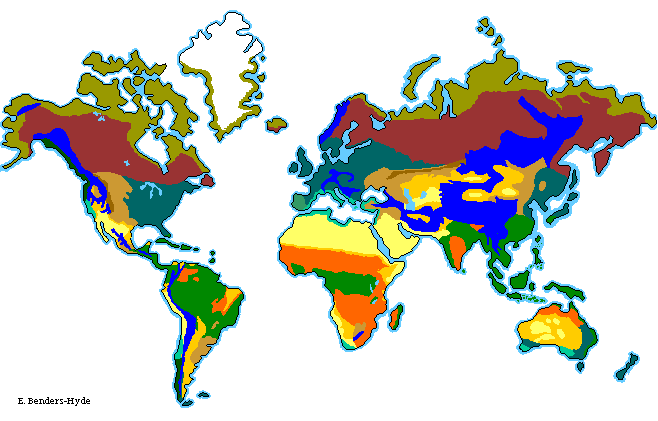



Desert-scrub
What is a Biome?A biome is a large geographical area of distinctive plant and animal groups, which are adapted to that particular environment. The climate and geography of a region determines what type of biome can exist in that region. Major biomes include deserts, forests, grasslands, tundra, and several types of aquatic environments. Each biome consists of many ecosystems whose communities have adapted to the small differences in climate and the environment inside the biome.
All living things are closely related to their environment. Any change in one part of an environment, like an increase or decrease of a species of animal or plant, causes a ripple effect of change in through other parts of the environment.
The earth includes a huge variety of living things, from complex plants and animals to very simple, one-celled organisms. But large or small, simple or complex, no organism lives alone. Each depends in some way on other living and nonliving things in its surroundings.
To understand a world biome, you need to know:
- What the climate of the region is like.
- Where each biome is found and and what its geography is like.
- The special adaptations of the vegetation.
- The types of animals found in the biome and their physical and behavioral adaptations to their environment.
Ecological Relationships of Biomes
The survival and well being of a biome and its organisms depends on ecological relationships throughout the world. Even changes in distant parts of the world and its atmosphere affect our environment and us. The eruption of a volcano in Mexico, or Southeast Asia can bring the temperature of the whole world down a few degrees for several years.
Our Planet Plants Animals Climate
Index